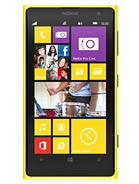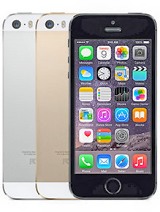GSMArena smartphone shopping guide: November 2013
November 2013
€500 and above
Call this the "money's no object" category, where only the best of the best will do. This category consists solely of flagships that were launched in the second half of 2013 - you'd be surprised how much of a difference even half a year can make in the tech world.
Here we're also including phones that didn't make the cut by virtue of their money over value ratio, but rather phones that are exemplary in some category.
The Sony Xperia Z1 is the revamped Xperia Z. The most impressive upgrade is the relatively big 1/2.3" sensor with 20.7MP resolution. That's point-and-shoot camera territory (including the Samsung Galaxy S4 zoom) but it fits in a slender 8.5mm body.
The body is once again a triumph of glass-and-aluminum design and sports the latest Snapdragon 800 chipset with an even higher water-proofing rating than the Xperia Z. Then there's the big 3,000mAh battery and expandable storage - difficult to pull off on a thin, water-resistant phone but Sony did it. It's a bit large for a 5" phone though.
The still camera produces impressive shots - check out our 6-way camera shootout - and has some interesting proprietary camera features (how about streaming video to Facebook live?).
 Sony Xperia Z1 |
Pros | Cons |
|
|
|
| Review | ||
The LG G2 could have made the cut earlier, but we left it for this category because of LG's Apple-like pricing strategy - the 16GB version is too limited by storage, but the 32GB costs €100 more. We wouldn't recommend 16GB storage as those HD videos (especially 1080p @ 60fps) and advanced 3D games will devour it in no time. And if not for the video or games, the beautiful screen, powerful chipset and 13MP OIS camera will go to waste.
And the LG G2 does have an amazing 5.2" screen with 1080p resolution that fits in the footprint of the Galaxy S4 and HTC One. It also packs a Snapdragon 800, which trumps the S4 (at least until the S4 LTE comes out), a 13MP camera with optical image stabilization and a lasting 3,000mAh battery.
The design might not be to everyone's tastes, and the volume rocker on the back is especially unusual (the tap to wake option has its detractors too). It's also plastic, which isn't up to par with the HTC One or Xperia Z1. Make no mistake though, the LG G2 is one of the best Android smartphones available at the moment.
 LG G2 (32GB) |
Pros | Cons |
|
|
|
| Review | ||
The Nokia Lumia 1020 is the true successor of the Nokia 808 PureView and has the most amazing camera ever found on a mobile phone. A huge 1/1.5" sensor with a whopping 41MP resolution creates amazing shots and with supersampling to 5MP, sharing is easy. Nokia is creating a ton of proprietary camera features like lossless digital zoom, manual controls and the Refocus app. Oh, and the 1020 is the only phone with a powerful xenon flash. The audio recording for videos is top notch too.
You do have to deal with the protruding camera hump on a phone that's not slender to begin with, and Windows Phone 8 could be a plus or a minus, depending on your preferences. It has a decent 4.5" WXGA AMOLED screen and dual-core Krait chipset, but Androids are wholly unimpressed. The 2,000mAh sealed battery is also not great, but you can get the grip accessory for an extra 1,020mAh and a more comfortable hold on the phone (albeit with added bulk).
This phone is all about the camera as it takes pictures like no other phone. Point-and-shoot cameras have a tough time competing, too. But if not for the camera, we can't justify more than double the price over the Lumia 920.
 Nokia Lumia 1020 |
Pros | Cons |
|
|
|
| Review | ||
The Samsung Galaxy Note 3 is the third iteration of the highly successful phablet series with an S Pen stylus. It has a beautiful 5.7" 1080p Super AMOLED screen and is powered by a Snapdragon 800 chipset, both of which make the split screen multitasking a real treat.
The S Pen also enables other multitasking options - it makes note taking and searching that much easier, and packs even more proprietary features than the Galaxy S4.
The 13MP camera did okay for stills and is absolutely amazing for video - it can record stunning 2160p video and excellent 1080p @ 60fps clips (better than the LG G2). For video, it has digital zoom that rivals the Lumia 1020s optical zoom.
The Galaxy Note 3 breaks away from Samsung's traditional plastic design - it's still plastic, but the faux-leather back is very convincing and really classes up the place. By the way, the device's size hasn't changed since the Note 2, despite the increase in screen diagonal.
The Samsung Galaxy Note 3 is targeted at business people (who will appreciate KNOX enterprise security) and power users who will love the huge mountain of features. If we had to go over them all, we'd have to copy and paste the review here.
Just make sure you're getting the N9005 version with Snapdragon 800 CPU - the N9000 with Exynos 5 lacks LTE and 2160p video capture.
 Samsung Galaxy Note 3 |
Pros | Cons |
|
|
|
| Review | ||
Finally, we come to the Apple iPhone 5s. Don't get us wrong, it's an amazing smartphone but the pricing gets harder to swallow each passing year, especially when you can have good Androids and WP8 phones at half the cost.
It's a gorgeous device no doubt, with a thin and light aluminum body and people really seem to enjoy the new gold color option.
The 8MP camera shows improvements over the 5s, but we can't shake the feeling that that it falls behind the curve. The new Apple A7 chipset is a modest beast (don't be fooled by core count and clock speed, it's a new architecture) and iOS 7 brought some much needed improvements. The TouchID fingerprint sensor is not a novel feature, but it's the best implementation on a smartphone yet.
However, as is usually the case with iPhone's, we come back to the problem of storage - 16GB just isn't enough these days (unless you don't store multimedia or play a lot of games) and the 32GB version costs as much as two Nexus 5 units with the same amount of storage.
 Apple iPhone 5s (16GB) |
Pros | Cons |
|
|
|
| Review | ||
Reader comments
- Anonim
- 20 Nov 2015
- PEm
Please Infinix Zero 2
- Grumbler
- 02 Feb 2015
- Nsg
Just listen to yourself,quadcore is far better than dual core that's a fact!
- J D
- 06 Feb 2014
- uud
plz suggest me about which is better nokia lumia 520 or nokia kunga 525